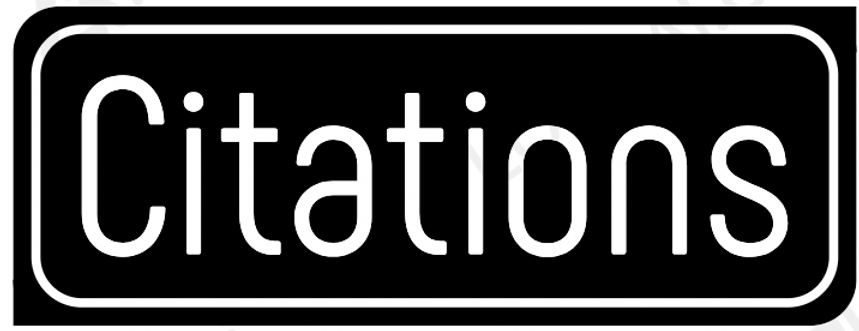Need help with formatting citations? Use this brief guide to five major styles
 Proper citation is a crucial aspect of academic writing. It not only gives credit to the original sources but also allows readers to trace your research back to credible references. In the realm of citation, different styles dictate how sources should be formatted. In this comprehensive guide, we will explore the major citation styles - APA, MLA, Chicago, Turabian, and IEEE - providing you with the tools and knowledge necessary for accurate and consistent citation formatting.
Proper citation is a crucial aspect of academic writing. It not only gives credit to the original sources but also allows readers to trace your research back to credible references. In the realm of citation, different styles dictate how sources should be formatted. In this comprehensive guide, we will explore the major citation styles - APA, MLA, Chicago, Turabian, and IEEE - providing you with the tools and knowledge necessary for accurate and consistent citation formatting.
What is a Citation Style?
A citation style is a set of guidelines that provide specific rules and formats for citing sources in academic writing. These styles ensure uniformity and consistency in citing various types of sources, such as books, articles, websites, and more. By adhering to a particular citation style, you can present your research professionally and demonstrate your commitment to academic integrity.
Overview of Major Citation Styles
-
**APA (American Psychological Association) ** The APA style is widely used in social sciences and education. It employs in-text citations and a reference list to acknowledge sources. For example, when citing a book in APA style, the in-text citation includes the author's last name and the publication year (Smith, 2022). The reference list provides the complete bibliographic details of each source.
-
**MLA (Modern Language Association) ** MLA style is commonly used in humanities and liberal arts. It employs in-text citations and a Works Cited page. In MLA, the in-text citation includes the author's last name and the page number (Smith 42). The Works Cited page provides the full bibliographic information.
-
Chicago/Turabian Chicago style is predominantly used in history, arts, and social sciences. It utilizes footnotes or endnotes and a bibliography. The note citation format includes a superscript numeral, while the bibliography provides the complete details of each source.
-
IEEE (Institute of Electrical and Electronics Engineers) IEEE style is used in technical fields, particularly in engineering and computer science. It employs numeric citations within square brackets, which reference a numbered list of sources at the end of the document.
Choosing the Right Citation Style
When selecting a citation style, consider the requirements of your academic institution or discipline. Some institutions may have specific guidelines or preferences for citation styles. Additionally, the nature of your research project and the intended readership can also influence your choice.
Here are some key points to consider when selecting a citation style:
-
Guidelines and Requirements: Different academic disciplines and institutions may have specific guidelines and requirements for citation styles. It is essential to understand and follow these guidelines to ensure compliance with academic standards and avoid plagiarism.
-
Publication Style Guides: Many disciplines have their own dedicated style guides created by renowned organizations or publishers. For example, the American Psychological Association (APA) style is commonly used in the social sciences, while the Modern Language Association (MLA) style is prevalent in the humanities.
-
Purpose of the Work: Consider the purpose of your work when choosing a citation style. Are you writing a scientific research paper, a literary analysis, or a history essay? Each discipline may have its preferred citation style that aligns with the conventions and expectations of that field.
-
Accessibility and Familiarity: Select a citation style that is easily accessible and that you are familiar with. It is essential to be comfortable with the rules and formatting requirements of the chosen style to save time and ensure accuracy.
-
Availability of Resources and Support: Consider the availability of resources and support for the chosen citation style. Ensure that you have access to style guides, online tutorials, and examples to help you correctly format your citations.
-
Consistency: Whatever citation style you choose, be consistent throughout your document. Consistency in citation style helps maintain readability and enables other researchers to easily locate and verify the sources cited in your work.
Tools and Resources for Formatting Citations
Formatting citations manually can be time-consuming and prone to errors. Fortunately, there are several tools and resources available to simplify the process. Citation generators, such as Grammarly, and Scribbr, enable you to input the necessary information and generate accurate citations in your desired style. These tools can save you valuable time and ensure consistent formatting throughout your work. Additionally, AI student tools like Sourcely offer advanced features, including source-finding AI and citation generation (Coming Soon), to assist you in your research journey.
Conclusion
Accurate citation formatting is essential for academic writing, as it demonstrates your credibility and supports the integrity of your research. By familiarizing yourself with the major citation styles - APA, MLA, Chicago, Turabian, and IEEE - you can confidently navigate the requirements of different disciplines. Remember to choose the appropriate citation style based on your institution's guidelines and the nature of your research project. Utilize the available tools and resources, including AI student tools, to streamline the citation process and ensure your work adheres to the highest academic standards.
